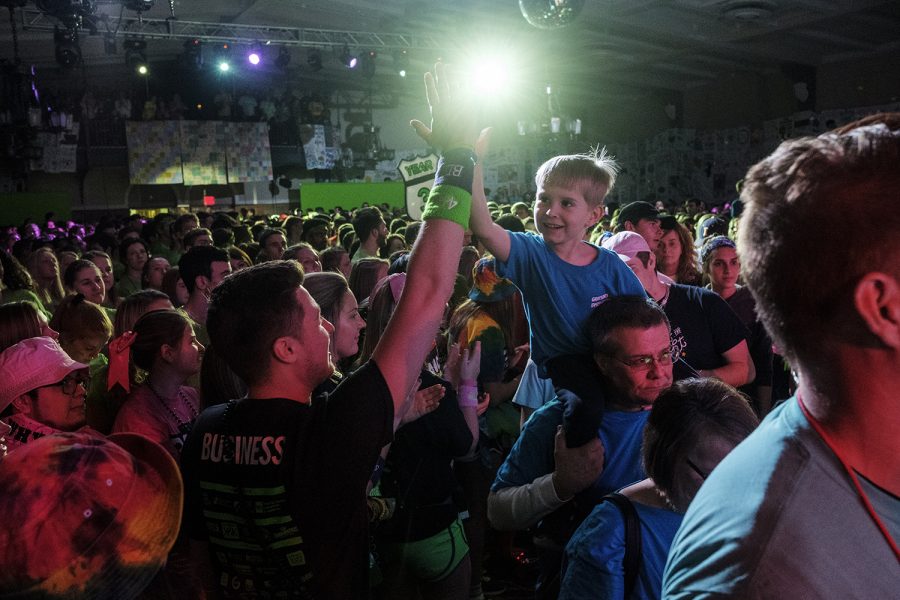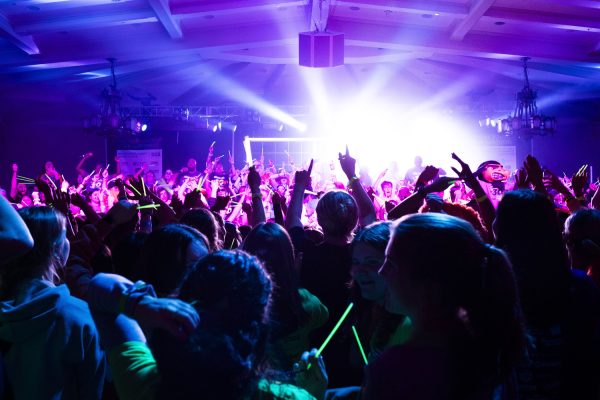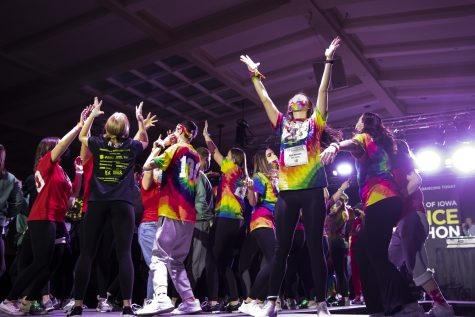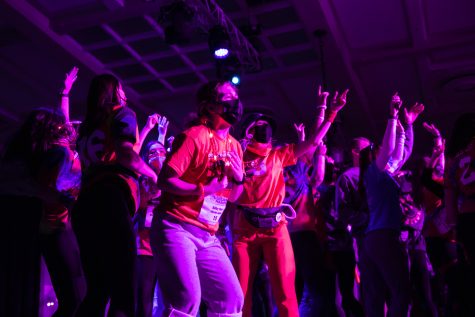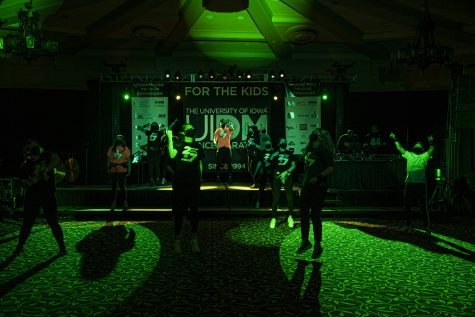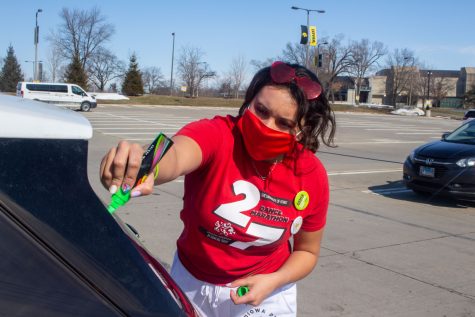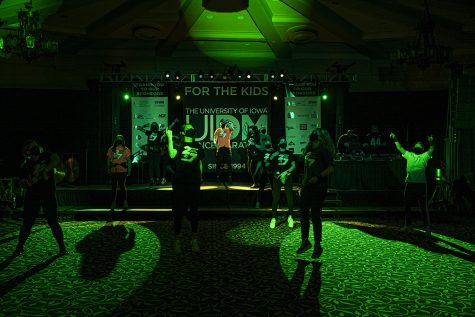Mini-marathons bring UI Dance Marathon to schools across Iowa
More than 50 schools across Iowa and Illinois participate in Dance Marathon’s mini-marathon program, which raises $150,000 for the kids.
Dance Marathon Families are introduced during Dance Marathon 24 at the Iowa Memorial Union on Friday, Feb. 2, 2018.
January 28, 2019
The University of Iowa Dance Marathon is the university’s largest student organization, but some people begin their time with Dance Marathon long before enrolling as UI students.
Almost 50 elementary, middle, and high schools across Iowa and Illinois participate in mini-marathons, which are smaller scale fundraising events to help raise money for the UI Stead Family Children’s Hospital.
Erin Taber, the mini-marathon co-chair for high schools, began her time as a dancer in her sophomore year at Iowa City West. She participated in her high school’s mini-marathon, as well as the Big Event at the UI.
“Dance Marathon is a big reason why I came to [the UI], and I have been involved all four years in college, three of those in leadership,” Taber said. “I have a lot of people on my committee who will say ‘Oh, I was on dance marathon at my high school …’ It really is cool to be able to spread that line to communities around the state of Iowa and have them come here to [the UI] and be so involved in our Big Event.”
Taber focuses on high school mini-marathons. Events can range from a full 12-hour marathon to smaller events such as a 5K or powderpuff football games.
RELATED: Dance Marathon adds new leadership positions, accessibility changes
“[Mini-marathon] really varies from school to school; we really encourage schools to do whatever works for them,” Taber said. “That being said, most schools do put on miracle dances. They can range anywhere from 50 minutes at an elementary school to 12 hours at the high-school level. Some schools can get 1,000 kids in their student body involved, where some other schools are smaller and have a core group of 35, 40 people who do their events.”
Dance Marathon outreach coordinator Darby Drenzek said some high-school students also choose to be involved with the UI’s Big Event.
“They have the opportunity to register as a dancer, and raise the $500 minimum, and join us at the Big Event in February,” Drenzek said. “There are a lot of people who will do that and dive into UI Dance Marathon with their friends.”
Mini-marathon co-chair Taylor Jordahl, who helps implement mini-marathons for elementary schools, concentrates on trading ideas with school officials.
“I work with a lot of faculty and staff at all of these schools to help them with fundraising ideas to essentially put on these smaller scale events at their school that celebrate all the money that they’ve raised, and it’s a really fun way to get younger students involved with fundraising,” Jordahl said.
Elementary schools often hold smaller events during the school day and hold simple fundraising events like coin drives, Jordahl said.
Around 75 percent of Dance Marathon’s funding comes from money raised by dancers for the Big Event. The other 25 percent comes from mini-marathons, sponsors, and alumni and faculty contributions.
Drenzek said the connection between UI Dance Marathon and the mini-marathons is mutually beneficial.
“We are able to send our leadership members to participate in our mini-marathons, just as we invite them [students] into the mission of battling pediatric cancer,” Drenzek said. “It’s very special for us to be so closely involved with them as they find their whereabouts in the organization and find what ties them to our mission.”



